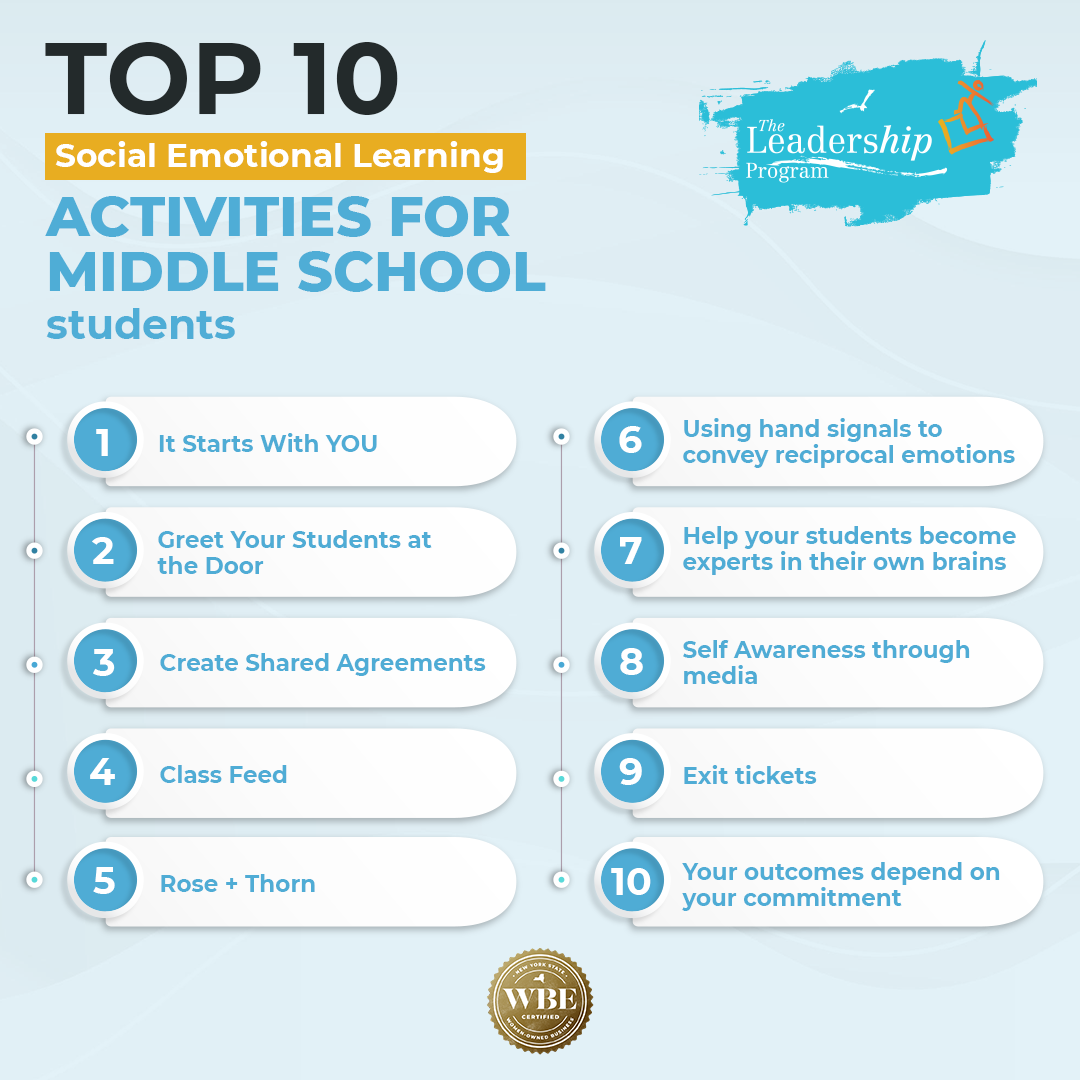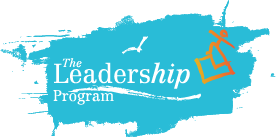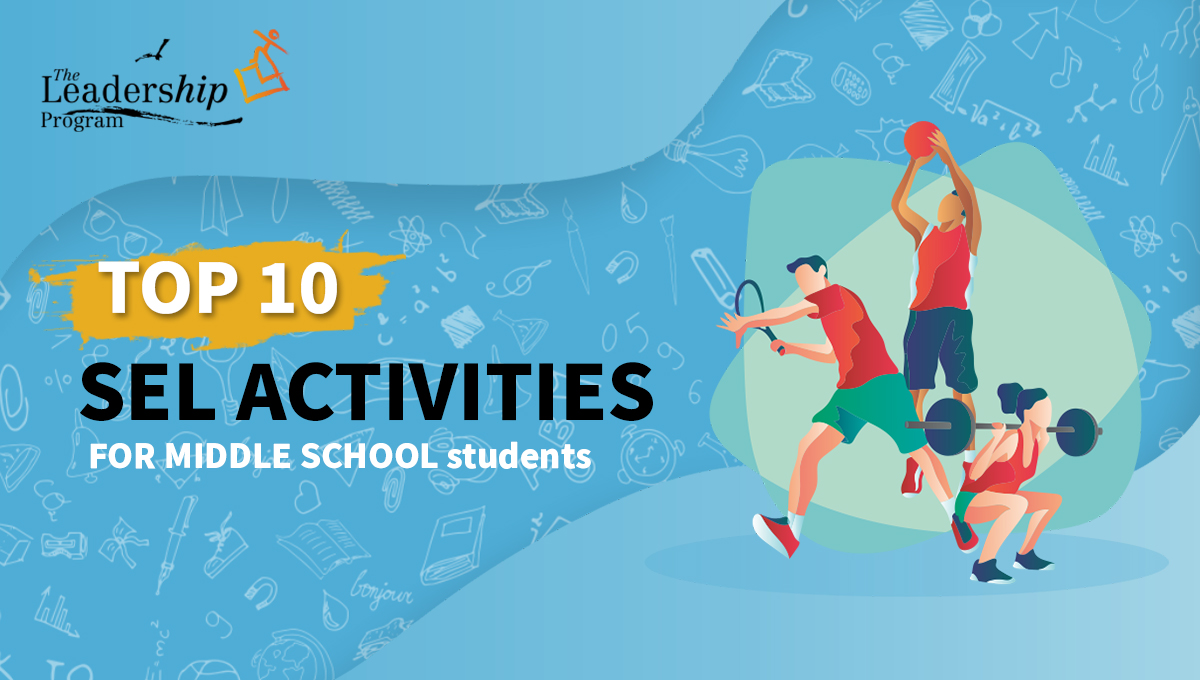As students transition from elementary school to middle school, their emotional development begins to lag behind their physical development. Compounded with the trauma of a global pandemic, remote learning, and general family stress makes SEL skills more important than ever. The strategies below are both stand-alone (actively take away from class time) and can be folded into classroom norms and behaviors (can be added to things that you already do in class). Middle school is a great time for students to start learning these social-emotional practices so they are ready to enter high school as mature young adults.
1) It Starts With YOU
Goal: Self Assessment as an Educator and SEL facilitator that both enables you to practice SEL in your own life and become comfortable with its implementation.
It is near impossible to teach SEL if one is not engaged with their own social-emotional reactions and responses. Before embarking on a year filled with SEL activities with your students, first practice the 5 pillars of SEL on yourself, and make sure that you can explore these things with comfort and ease. It’s ok if SEL is not for you right now!
2) Greet Your Students at the Door
Goal: Begin to create an environment of higher self-esteem by individually acknowledging each student.
When you greet every child individually, you remind the student that you see them, you are excited that they’re in school, and you are here for them. This practice also encourages students to become less guarded in class.
3) Create Shared Agreements
Goal: Develop a pact for social awareness and self-management in which students build trust in each other by establishing a safe space to convey vulnerability.
Create simple classroom norms that your students can realistically follow and keep. These should be measurable, specific, and come with consequences for when an agreement is broken. Shared agreements should be posted somewhere visible to everyone in the classroom and will promote responsible decision-making and self-accountability. Your student’s relationship skills will develop as they begin to feel comfortable in the safe space filled with consistency and predictable outcomes that you have provided them.
4) Class Feed
Goal: Students are able to be anonymously vulnerable and begin to feel both empathy and understanding for students in similar situations to them.
Students create a wall space for anonymous posts. Use butcher paper or simply empty wall space. Leave post-its near the board where students can anonymously post questions or comments about an assignment. Students build confidence over time as they begin to understand that they might not be the only one who needs help in class.
5) Rose + Thorn
Goal: Students will become more comfortable with talking about their feelings out loud as well as develop empathy for their peers.
This activity could be done daily or at the end of the week to close out the class. Students will sit in a circle and say one good thing that happened to them that week (rose) and one thing that made them upset that week (thorn). This activity can be done in small groups or as a whole class.
6) Using hand signals to convey reciprocal emotions
Goal: Students will learn various ways to convey empathy. Especially good for students who are not comfortable with sharing their feelings out loud.
Here are 3 main hand signals that convey both empathy and active listening. When someone says something sad or painful, a simple “hand over the heart” can function as a hug. To show mutual feelings or respect, make your hand into the “hang loose” sign, and pull your hand away from your heart and then towards your heart (“me too”). If someone would like to speak at an inopportune moment, the student can cross their fingers to serve as a reminder, and keep their fingers crossed until the appropriate time to share their thought.
7) - Help your students become experts in their own brains
Goal: Students will learn the neurological framework for developing a growth mindset.
Explain to students that each time they attempt a new task, especially a difficult task, their brains literally grow and make connections in other parts of the brain. When neurons fire, they are sending chemical signals that stimulate parts of our brain, causing them to grow more neural connections, thus increasing the “useable space” in our brains. By understanding the science of brain development, students learn the advantages of trying difficult tasks, even if it means that they will fail the first few times. (https://www.cmich.edu/ess/oss/Documents/Prepare%20for%20Success%20d4.pdf).
8) Self Awareness through media
Goal: Students will develop a critical lens to engage with media
As a general way to check in with your students, you can casually ask a student to show you their favorite TikTok or youtube video of the week. After they’ve shared it with you, aid them in self-awareness by asking open ended questions that help them think critically about this song/video/show such as “do you feel like this character sometimes? How so?” or “What does this character have that you want? Why?”. Students develop connections between the media they are consuming and their own emotions.
9) Exit tickets
Goal: Students develop a regular practice of exploring their current feelings and become more aware of how they enter and exit a space.
In order to leave class at the end of the day, students write the answer to an SEL question. Try to ask a question that cannot be answered with a single word; instead, ask questions like: 'what will you be doing after school today?’ or ‘how can you relate (today’s assignment) to your life at home?’. Teaching students this quick method of self-reflection will allow them to close out the day feeling seen, heard, and whole.
10) Your outcomes depend on your commitment:
Goal: Creating appropriate time and space for SEL in the classroom.
SEL takes time. Before implementing any of the following strategies - ask yourself “do I have the time in my class to commit to SEL?” Social-Emotional Learning activities are a delicate practice that relies on interpersonal trust and the creation of a “safe space” - and if students are engaging in a vulnerable activity that is cut short, feelings of rejection and aversion are apt to develop, making it harder to re-engage in SEL activities at a later time.
Click Here to learn more about our Social Emotional Learning.




Comments [0]
Click here to read/write comments